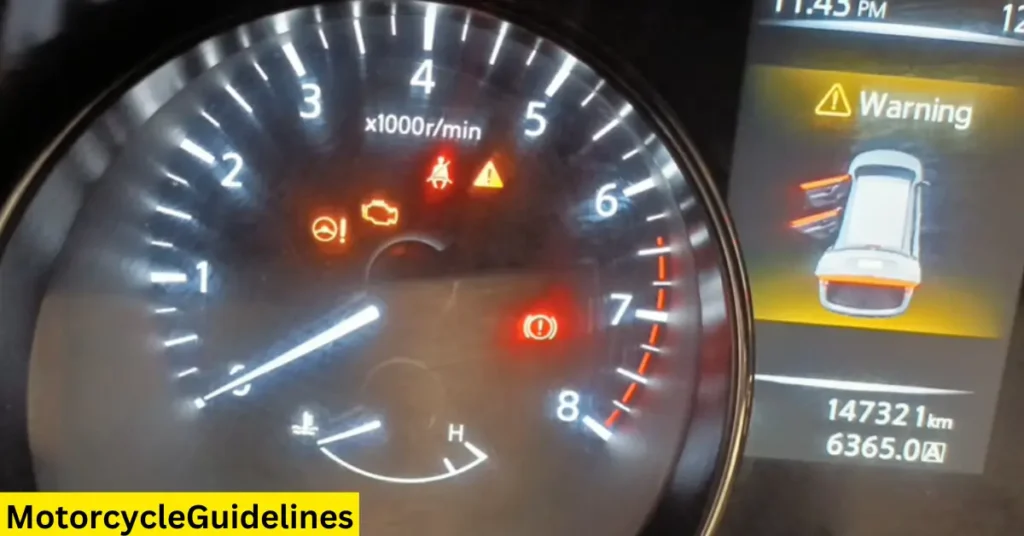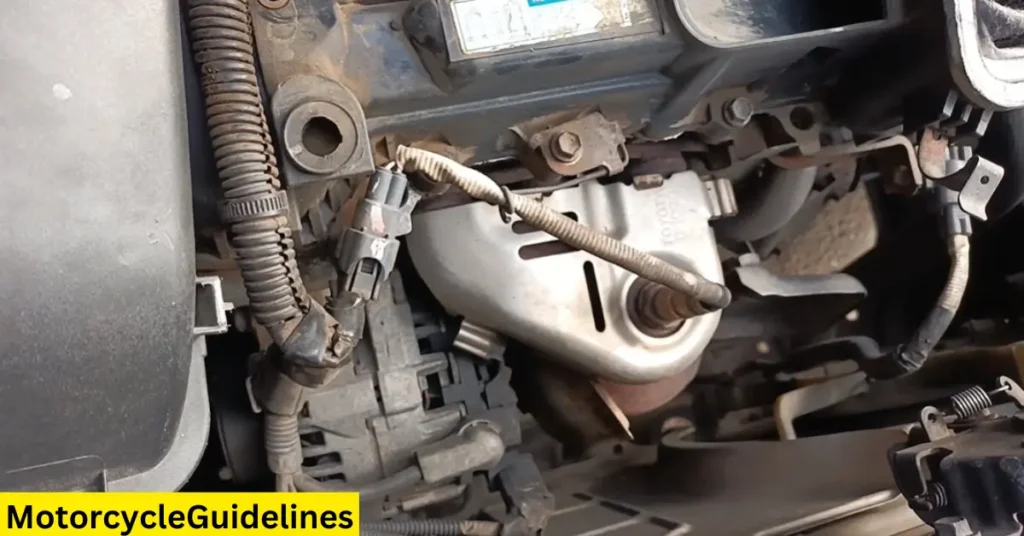Have you ever seen your check engine light turn on and wondered, “Can a Missing Oil Cap Cause the Check Engine Light to Turn On?” While most drivers know common reasons for the warning light, few realize that something as simple as a missing oil cap can significantly affect your vehicle’s performance. In this article, we’ll explore how a missing oil cap can trigger the check engine light, the potential consequences, and how to resolve the issue. By the end, you’ll better understand your car’s oil system and why even small components are essential.
What is the Check Engine Light?
Before diving into how a missing oil cap could potentially trigger the check engine light, let’s first define what the check engine light is and what it signifies.
The check engine light (CEL), also known as the malfunction indicator light (MIL), is part of your vehicle’s onboard diagnostic system (OBD). It is designed to alert you to a range of issues, from minor problems like a loose gas cap to more serious engine and transmission malfunctions.
When the check engine light illuminates, it can mean a variety of things. The OBD system stores a code that can be retrieved by a mechanic or using an OBD scanner. The nature of the code can provide insight into what might be wrong with the vehicle. While some issues might be minor and easy to fix, others could indicate significant problems that require immediate attention.
Why Is the Oil Cap Important?
The oil cap is a small but vital part of your vehicle’s oil system. Its primary function is to keep the engine oil inside the engine, preventing leaks and ensuring the engine has enough lubrication to operate properly. Oil lubricates various moving parts inside the engine, reducing friction, heat, and wear. Without the proper amount of oil, your engine could overheat, become damaged, or even fail completely.
The oil cap also serves an additional role in maintaining pressure within the engine’s oil system. When you’re driving, the engine produces a lot of heat, and the oil cap helps to keep the pressure balanced. If this cap is missing, it can disrupt the normal operation of the engine and even lead to warning lights, such as the check engine light, turning on.
How a Missing Oil Cap Can Trigger the Check Engine Light
So, can a missing oil cap really trigger the check engine light? Yes, it can. Here’s how:
-
Oil Pressure Loss If the oil cap is missing, the oil system in your engine could lose pressure. The cap helps to create a seal that maintains the proper pressure for the oil to circulate effectively throughout the engine. Without it, oil could spill out, and the pressure might drop, triggering the check engine light.
-
Air Contamination Another effect of a missing oil cap is that dirt and debris can enter the oil system. When the engine is running, the air in the engine bay moves, and if there is no oil cap in place, contaminants such as dust, dirt, and even moisture can make their way into the oil. This can degrade the quality of the oil, reduce its effectiveness, and lead to the check engine light being triggered.
-
Evaporative Emission System Disruption In modern cars, the evaporative emission system (EVAP) is responsible for capturing fuel vapors that would otherwise escape into the atmosphere. The missing oil cap can disrupt this system by allowing air to enter the oil compartment, causing a disturbance in the air-to-fuel ratio. The OBD system could register this issue, triggering the check engine light.
-
Oil Leaks Without the oil cap, the engine oil may leak out, creating puddles of oil underneath the vehicle. If the oil level gets too low, this could lead to a drop in oil pressure, triggering the check engine light to turn on. A leak of oil can also lead to engine overheating and other serious issues if left unchecked.
-
Faulty Sensors Missing oil caps can also affect sensors in your vehicle, particularly those that monitor the oil level and pressure. If these sensors detect irregular readings, they may send signals to the car’s computer system, turning on the check engine light as a warning.

Signs That You Might Have a Missing Oil Cap
In addition to the check engine light turning on, there are several other signs that your car may be experiencing issues due to a missing oil cap. Keep an eye out for the following:
-
Oil Spills or Stains Under the Car: A missing oil cap will cause the oil to spill out, leaving oil stains or puddles beneath your vehicle.
-
Unusual Engine Noises: Without proper oil pressure, the engine components may start to grind against each other, causing knocking or ticking noises.
-
Smoke from the Engine Bay: If oil is spilling out and making contact with hot engine components, it can cause smoke to rise from the engine bay. This is a sign that you should address the issue immediately.
-
Strong Oil Smell: You may notice the distinct smell of burning oil if it’s leaking out of the engine. This is another sign that the oil cap may be missing or improperly sealed.
How to Fix the Issue of a Missing Oil Cap
If you’ve determined that the missing oil cap is causing your check engine light to come on, don’t panic. Fortunately, this is a relatively simple issue to address. Here’s what you can do to fix the problem and prevent further damage to your engine.
1. Replace the Missing Oil Cap
The most straightforward solution to a missing oil cap is to replace it. If you’ve lost the cap, or if it’s damaged, it’s essential to get a new one. You can either visit an auto parts store or order a replacement online. Be sure to get the right type of cap for your specific vehicle model, as oil caps come in different sizes and styles.
Most oil caps are relatively inexpensive, typically costing between $5 and $15. Replacing the cap should immediately resolve any issues related to oil loss, pressure, or contamination.
2. Inspect for Leaks
Once you’ve replaced the oil cap, it’s crucial to inspect the area around the oil compartment to ensure no oil is leaking. Check under the car for any signs of oil puddles or stains on the ground. If you notice oil leaks, the problem may not just be the missing cap but also a faulty seal or gasket.
You can use a flashlight to inspect the engine bay for signs of oil splashes. If you spot any leaks, it’s important to have them repaired as soon as possible to prevent further damage to the engine.
3. Clear the Check Engine Light
After you’ve replaced the missing oil cap, the check engine light may still be on. In many cases, it will turn off automatically after a few driving cycles. However, if the light remains illuminated, you can clear it manually using an OBD-II scanner.
An OBD-II scanner is a tool that can read and clear trouble codes from your car’s computer system. These devices are available at most auto parts stores, or you can visit a mechanic to have them clear the code for you. Once the code is cleared, the check engine light should turn off.
4. Check and Top Up Oil Levels
After replacing the cap, it’s a good idea to check your oil levels. If your engine has lost oil due to the missing cap, the oil level might be low. Use the dipstick to check the oil and top it up if necessary.
Always ensure that you’re using the correct type of oil for your vehicle, as specified in your owner’s manual. Keeping the oil at the proper level helps maintain optimal engine performance and prevents damage to critical engine components.
5. Inspect the Oil System for Contaminants
If the oil cap has been missing for an extended period, contaminants such as dirt, debris, or moisture may have entered the engine oil system. In this case, it’s a good idea to perform an oil change to ensure the oil remains clean and effective.
A regular oil change is essential for maintaining the health of your engine. It’s also a good opportunity to replace the oil filter if it’s clogged or worn out. Clean oil and a fresh filter will keep your engine running smoothly and help prevent issues related to low oil pressure or poor lubrication.
6. Monitor Engine Performance
After replacing the oil cap and addressing any potential oil-related issues, it’s important to monitor your engine’s performance. Listen for any unusual sounds, such as knocking or ticking, which could indicate that the oil pressure is still low. Also, keep an eye on the temperature gauge to ensure the engine is not overheating.
If you notice any ongoing issues or if the check engine light remains on, it’s best to take your car to a certified mechanic. They can perform a more thorough inspection and diagnose any deeper issues that might not be immediately obvious.
Preventing Future Issues with the Oil Cap
While the solution to a missing oil cap may be simple, it’s important to take steps to prevent similar issues in the future. Here are some tips to help you avoid losing the oil cap or causing damage to your engine:
1. Ensure the Cap is Properly Sealed
Every time you check or change your oil, make sure the oil cap is securely tightened. Sometimes, the cap can become loose during maintenance or driving, causing it to fall off. Tightening it properly will help prevent leaks and ensure the engine operates under the right pressure.
2. Keep the Oil Cap Clean
Dirt and grime can build up around the oil cap, making it more difficult to remove or reseal. Regularly clean the area around the oil cap to ensure it remains free from contaminants. A clean, well-maintained oil cap will work more effectively and reduce the likelihood of issues.
3. Be Cautious During Oil Changes
If you’re performing your own oil change, be sure to double-check that the oil cap is replaced correctly after the procedure. It’s easy to forget to put the cap back on after an oil change, leading to potential oil leaks or pressure loss.
4. Keep an Eye on the Oil Level
Regularly check the oil levels in your car to ensure it’s not running low. If the oil level drops significantly, it can lead to engine damage, even if the oil cap is in place. Maintaining the right oil level will help keep the engine running smoothly and prevent the check engine light from coming on due to oil pressure issues.

Conclusion
A missing oil cap can indeed trigger the check engine light, and while it may seem like a minor issue, it can lead to significant engine problems if left unresolved. From oil pressure loss and contamination to engine overheating, a missing oil cap can disrupt your vehicle’s performance and cause costly damage. The good news is that fixing the problem is relatively simple, with options like replacing the cap, checking for oil leaks, and performing regular maintenance to keep your engine in top shape.
By staying proactive and paying attention to the health of your vehicle’s oil system, you can prevent issues related to a missing oil cap from becoming a serious problem. Regularly inspect your oil system, replace the oil cap if it’s lost, and monitor your car’s performance to keep everything running smoothly. If you’re ever uncertain about your car’s condition, don’t hesitate to consult a professional mechanic for assistance.
